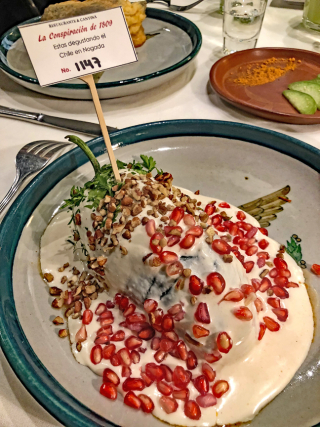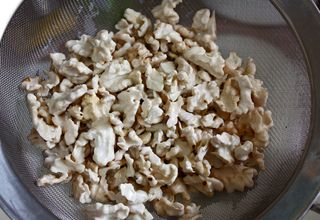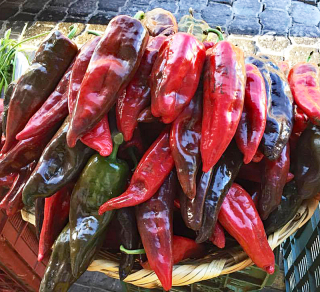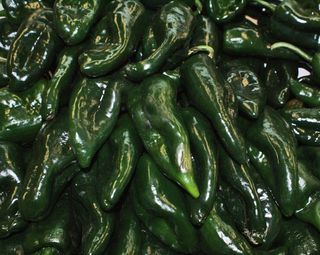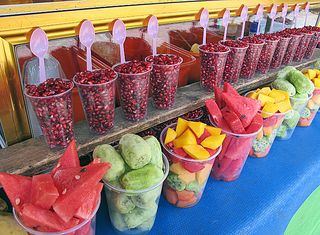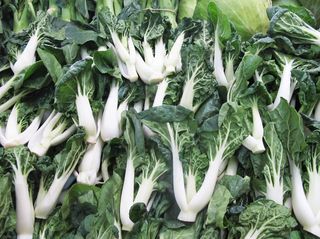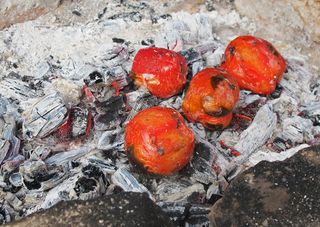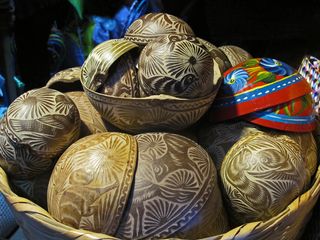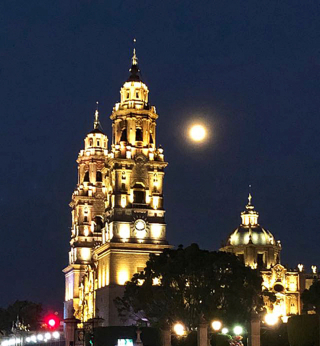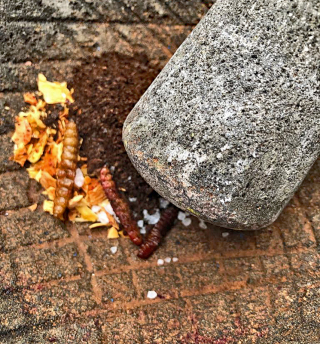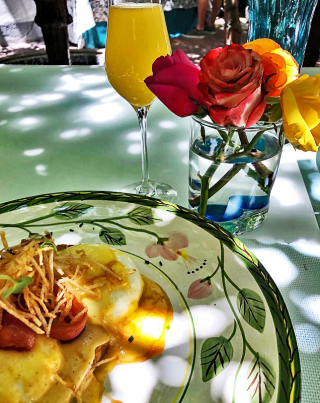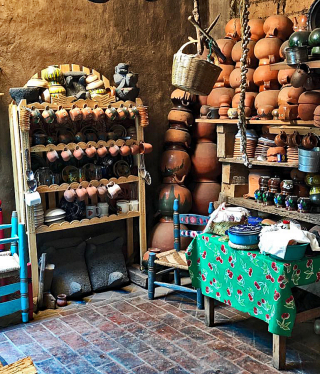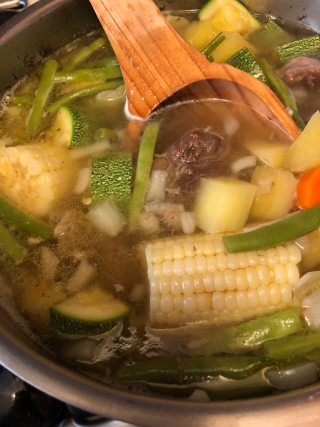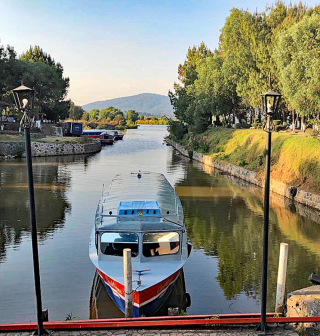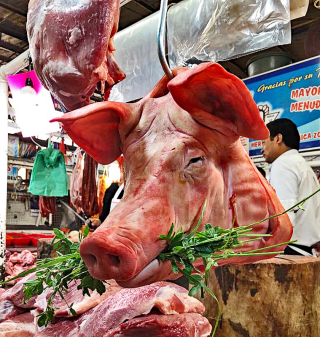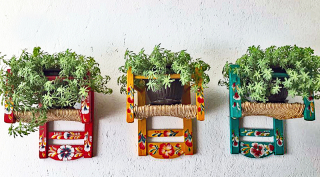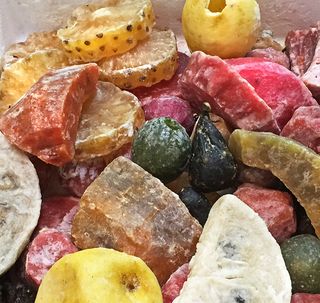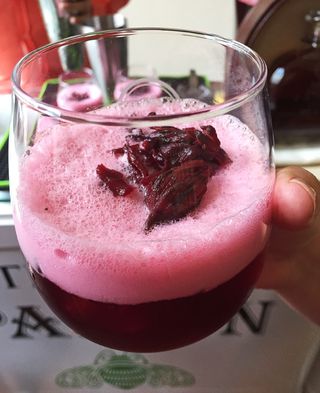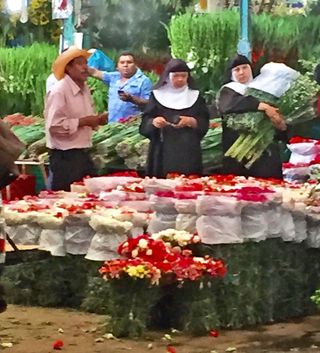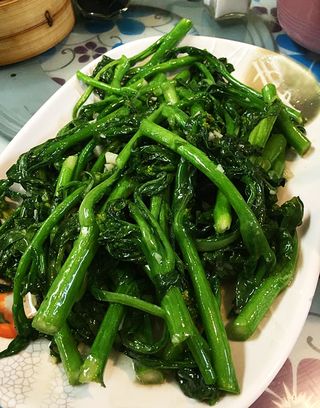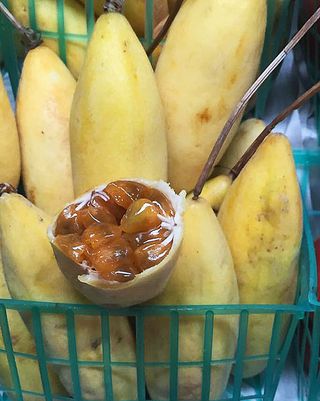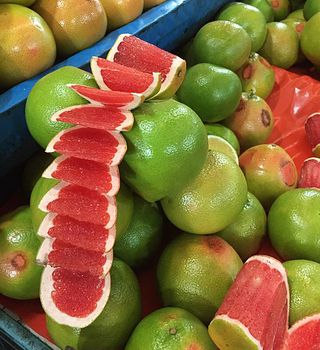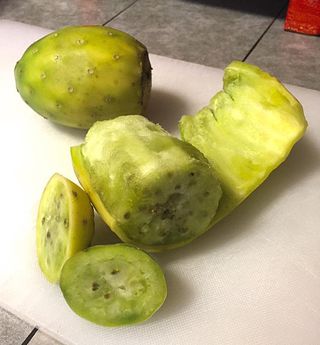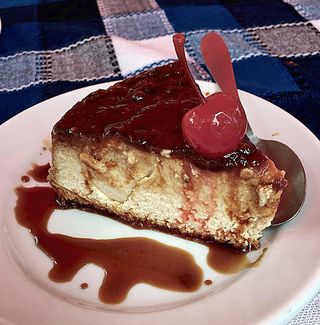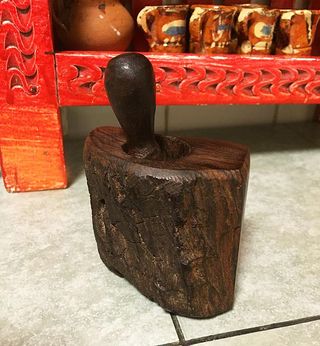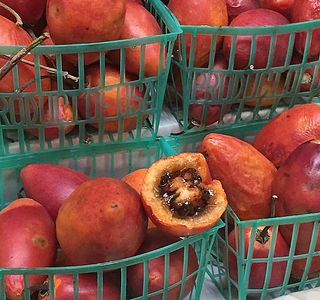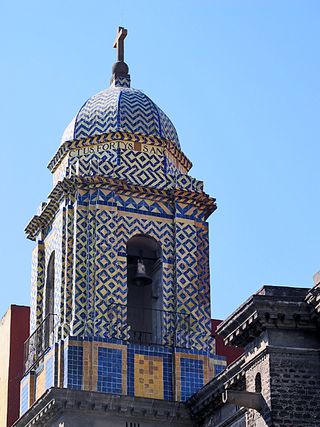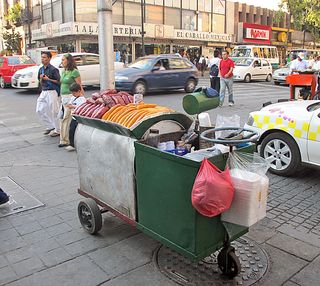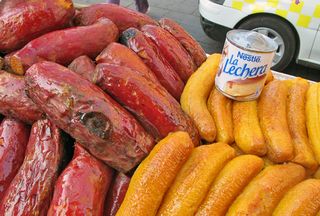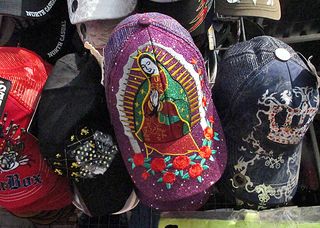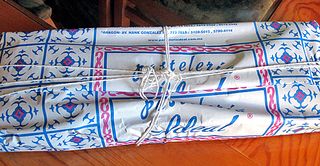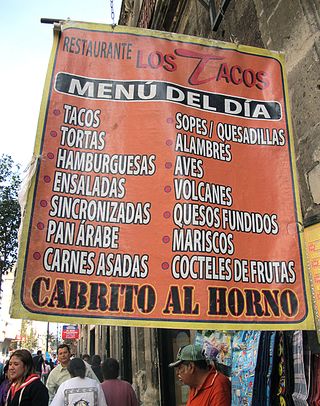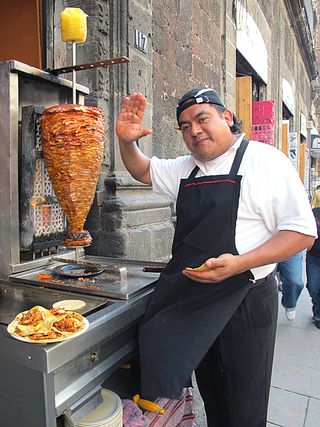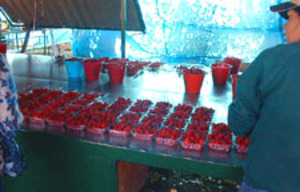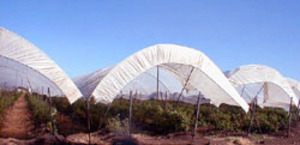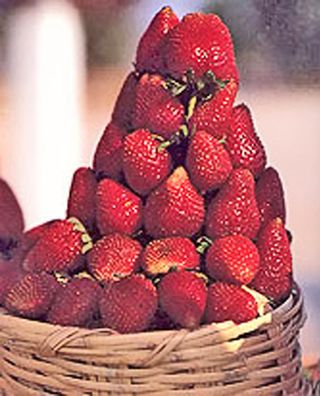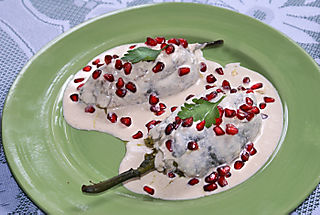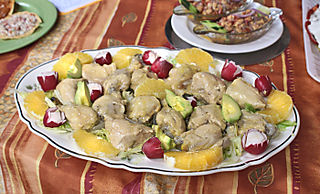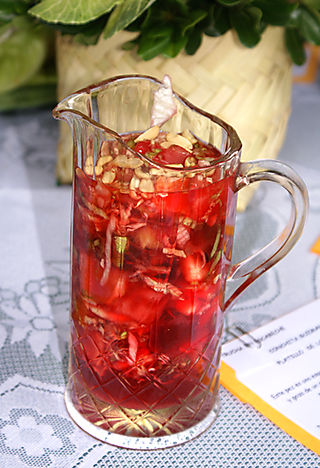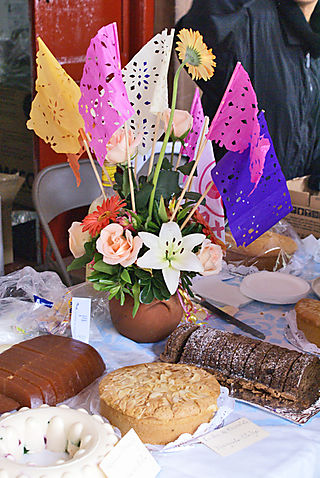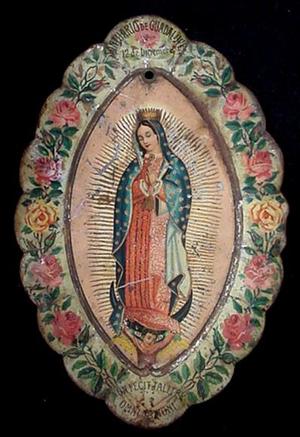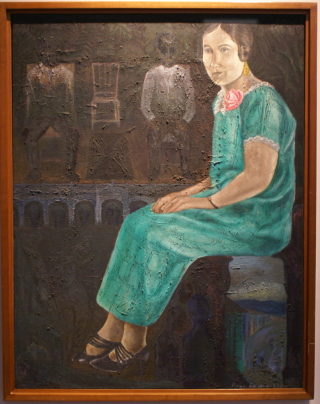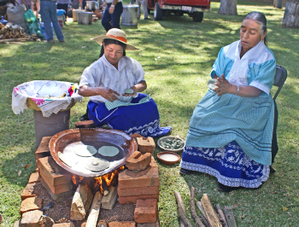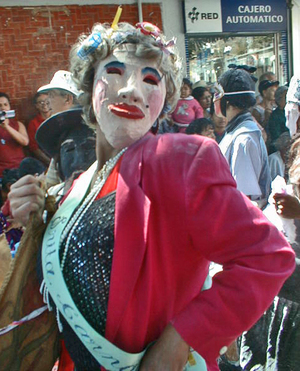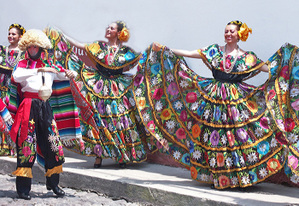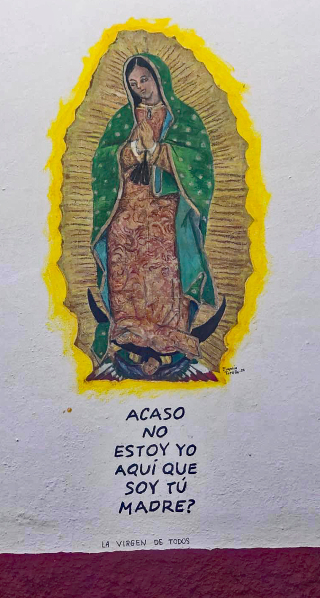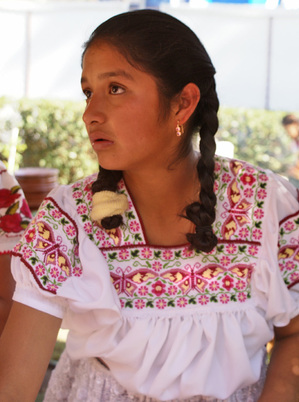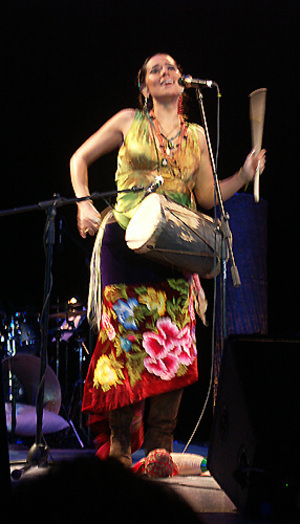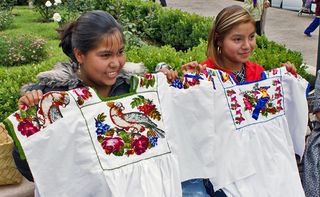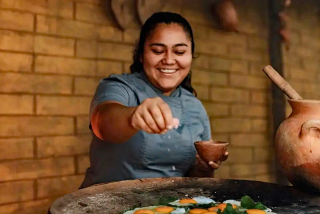
Thalía Barrios García, chef and cocinera tradicional (traditional cook) and head of the kitchens at both of her restaurants: Levadura de Olla and La Cocina de Humo, both located in the Centro Historico of Oaxaca, Oaxaca de Juárez, Mexico. Thalía was born and raised in San Mateo Yucutindoó, a town of approximately 2500 inhabitants in the Sierra Sur of the state of Oaxaca. The town is approximately 100 kilometers (60 miles) from the capital city of Oaxaca. Photo courtesy UTVCO
Two months ago, I spent a week visiting many friends in the city of Oaxaca. I was thrilled; I hadn't travelled anywhere since early 2019. Pre-COVID, I was accustomed to travel to Oaxaca as many as six times a year, taking tour groups, attending culinary events, and generally taking my Michoacán-based, Oaxaca-related life for granted. In March 2020, boom! COVID's impact on Mexico–and everywhere else in the world–shut down tours, culinary events, and travel. This June, I was way beyond eager to see old friends, enjoy long comidas (comida is the afternoon main meal of the day in Mexico) with them, and have the time to visit Thalía Barrios García, the young Oaxaca culinary phenomenon, in one of her two restaurants. She asked me to have desayuno (breakfast) with her at Cocina de Humo (the smoke kitchen) and I jumped at the chance.

La Cocina de Humo is an offshoot of her larger restaurant, Levadura de Olla (literally 'yeast for a clay pot'; in Thalía's native San Mateo Yucutindoó, bread is baked in clay pots). At La Cocina de Humo, I was privileged to sit in the kitchen for breakfast, next to the comal (in this case, a flat handmade clay griddle seated above a wood fire). The tiny restaurant space is specifically designed to be a copy of the home kitchens of Yucutindoó. The photo above is the view from my seat; the comal is just to the left of the vegetables. All photos by Mexico Cooks! unless otherwise noted.
Thalía left her hometown when she was 18 years old, to attend culinary school. Her parents were 100% behind her decision. Thalía says, "My parents were always behind us kids, they wanted only the best for each of us and dreamed that we would be able to leave our town to achieve something in the wider world. My parents said, "The only condition is that you do something chingona." Loosely translated, that means 'badass', and in my opinion, Thalía's middle name should be chingona.
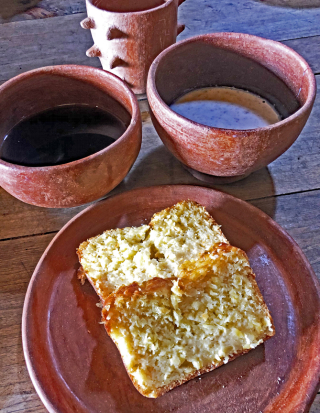
My first course included café de olla (coffee with cinnamon and other spices, middle left), atole de plátano (a thick corn-based drink, in this case including banana, right), and pastel de elote (a delicious semi-sweet cake made with fresh, early-season corn). At the back of the photo, the cup is made to resemble the pochote tree trunk–pochote, endemic to Oaxaca and Puebla, is known in English as kapok.
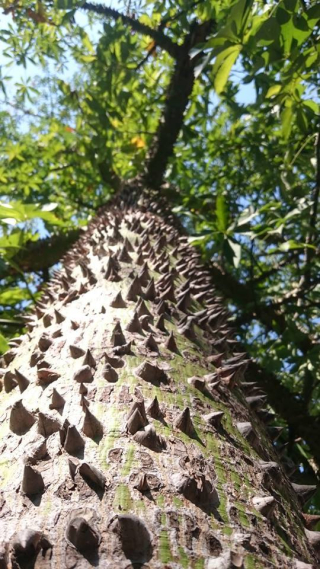
The trunk of a pochote tree. I took the photo in the Biósfera Tehuacán-Cuicatlán, in the state of Puebla (just north of the Oaxaca state border). You can easily see the resemblance the trunk, with its soft protuberances (they look like sharp thorns, but they're not), has to the cups used at La Cocina de Humo. Every aspect of the pochote tree is sacred to the Maya–including to the contemporary Maya. From its curative bark to its medicinal roots, from its profound shade to its life-giving energy, it is easy to understand why the handmade clay cups at La Cocina de Humo have the shape that they do.
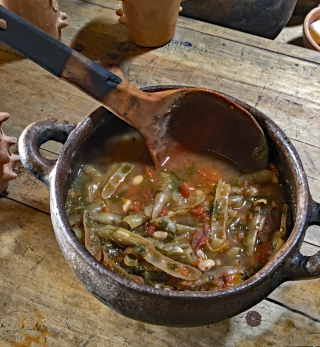
Caldo de ejote de milpa (broth with green beans from the milpa). The wooden serving spoons for each of these dishes were large, and the handmade bowls themselves were small, thank goodness. I'm pretty sure that Thalía sent me everything on the menu to taste!
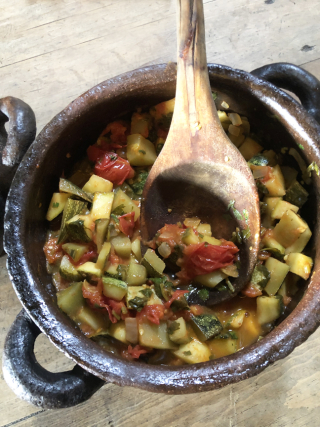
Calabacitas criollas (diced little squash, similar to zucchini) with jitomate riñón (kidney-shaped tomatoes particular to Oaxaca), seasoned with d
elicious spices. All of the dishware at La Cocina de Humo is handmade clay, designed by Thalía and some women potters in San Mateo Yucutindoó.
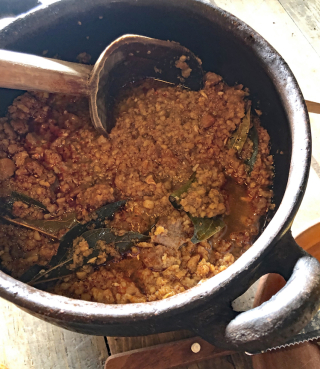
Barbacoa de olla (pot-style barbacoa) made of pork, chicken, the leaf of avocado criollo, chile guajillo and chile ancho.
After finishing the equivalent to a bachelor's degree at the culinary school that is part of Oaxaca's Universidad Tecnológica de los Valles Centrales, Thalía worked in various restaurants until she realized that her strongest point was the traditional kitchen, and not just any traditional kitchen, but the dishes she originally learned from her grandmother, her mother, and her aunts. I first met Thalía several years ago, when she was cooking under the baton of my beloved friend Celia Florián, the cocinera tradicional who is head of the kitchen at Oaxaca's internationally renowned Restaurante Las 15 Letras. In 2019, Thalía opened her first restaurant, Levadura de Olla. By 2021, she was considered to be the most outstanding participant in the awards of the 50 Best Restaurants of Latin America, given that year in the city of Oaxaca. And since then, the reviews have been pure praise, pure delight, for her cooking, her restaurants' style, and her own chingona self since the beginning.
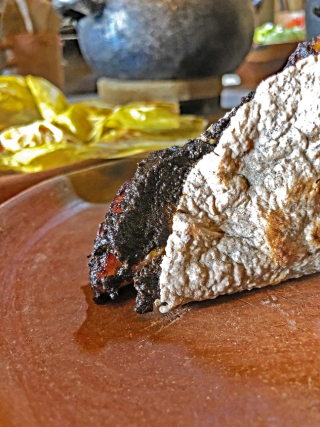
A newly made taco filled with house-style mole negro (black mole) and deliciously fried sweet plátano macho–super-ripe plantain. This was course number three or four–nothing was large, nothing was overpowering, and every single taste of every single thing was marvelous.
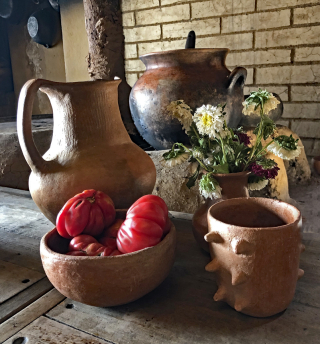
Stove-side still life with jitomate riñón, at La Cocina de Humo.
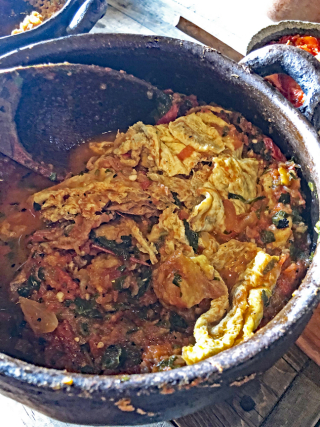
On reflection, I think this was my favorite of the many separate platillos (prepared dishes) that I ate (at least some of) for breakfast. This is simplicity itself: a freshly-made salsa de molcajete (a table salsa in which all the comal-roasted ingredients are ground together in a volcanic stone mortar, with a volcanic stone pestle). While the salsa is hot from the roasting, raw eggs are scrambled into it. The ingredients were that old cliché: much more than the sum of their parts. I'd have it again tomorrow, and the next day. And oh joy, I've been invited back to Oaxaca this coming October. Can you guess where I'll be having breakfast?
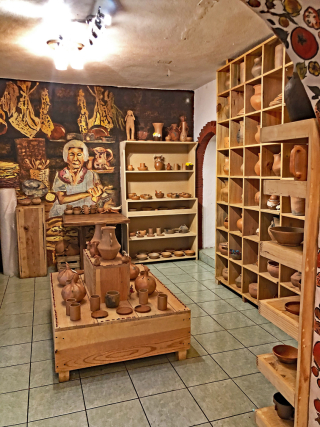
Don't miss the store (Tienda Piedra de Río) in the front of the building where La Cocina de Humo is located. The pottery is the same as that used in the restaurant, those wonderful pochote cups are available there, and lots of other beautiful Oaxaca kitchen and household things are there as well.
I recently read a quote that I love, dedicated to La Cocina de Humo. I hope you'll love it too, and I hope you'll go to eat there as soon as you possibly can.
"Si dios (el qué sea de su confianza) bajara al mundo de los mortales, sería para comer aquí."
"If god (whichever god you might trust) were to come from Heaven to this mortal world, it would be to eat here."
________________________________________
La Cocina de Humo
Calle Murguía 304
Near the corner of Calle Juárez
Centro Histórico
Oaxaca 68000
Oaxaca de Juárez
Tel: +52 951 169 8076
Hours: Monday through Saturday 9:00AM – 9:00PM
Closed Sundays
Reservation necessary
Looking for a tailored-to-your-interests specialized tour in Mexico? Click here: Tours.
